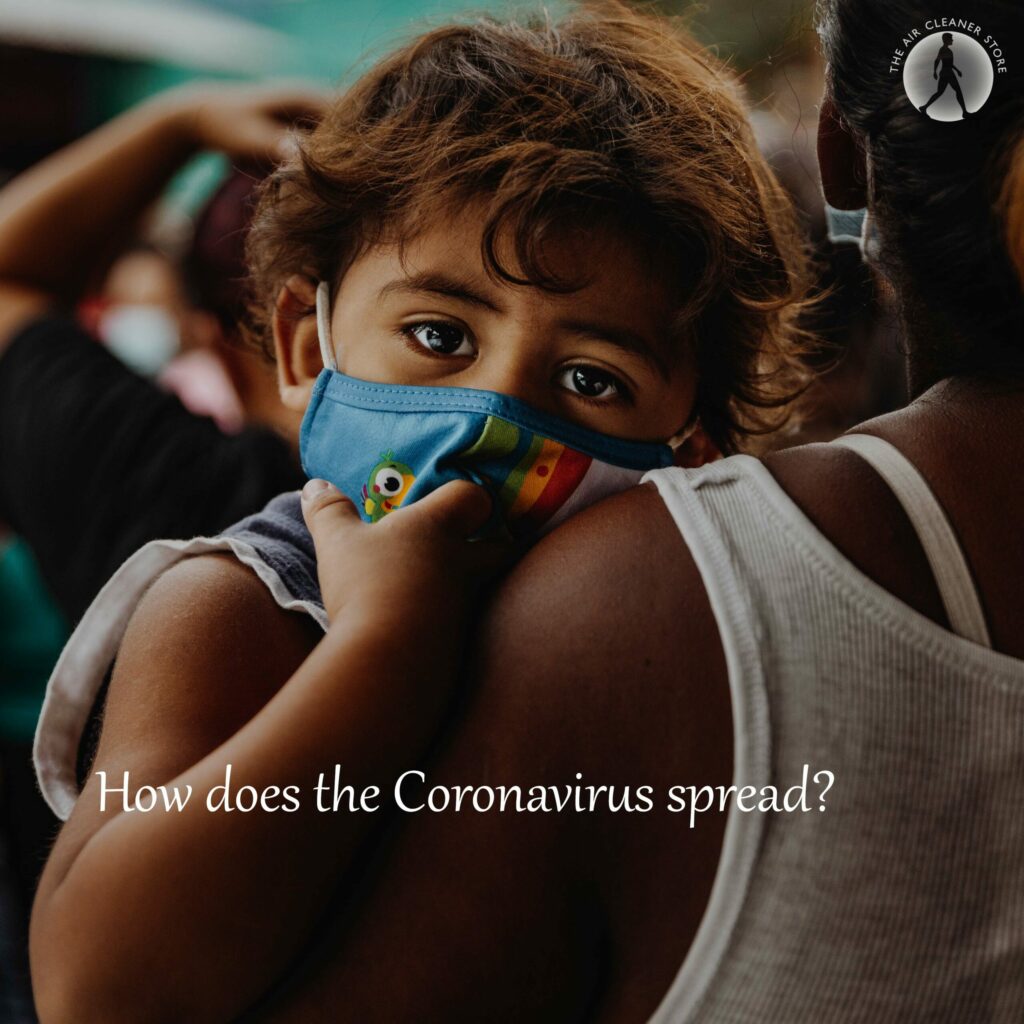Before we explain how this infectious respiratory disease spreads, it is important to keep in the following in mind:
- COVID-19 spreads primarily through close interaction between individuals.
- Infected people who have no symptoms can still transmit the virus to others.
- Reinfection with COVID-19 is possible and has been confirmed.
The ease with which a virus spreads from person to person varies. COVID-19 tends to spread more quickly than influenza, but not as quickly as the measles.
How Does Covid-19 Spread?
The SARS-CoV-2 virus, which causes the disease, is known to spread between people in a variety of ways.
The virus has been confirmed to spread when an infected person:
- Coughs
- Sneezes
- Speaks
- Breathes
Viral particles tend to travel through the air from person to person. These particles can vary from larger respiratory droplets to tiny aerosols.
According to WHO, the virus spreads between people who are in close proximity to one another, usually within 1 meter (short-range). When virus-containing aerosols or droplets are inhaled or come into direct contact with the eyes, nose, or mouth, an individual may become infected.
The virus may also spread in crowded and/or poorly ventilated indoor environments, where people spend longer periods of time. This is due to the fact that aerosols stay suspended in the air, or travel a distance of more than one meter (long-range).
People may also become infected by touching surfaces contaminated by the virus before touching their eyes, nose, or mouth.
COVID-19 spreads less commonly through contact with contaminated surfaces
Droplets from the lungs can land on surfaces and objects. COVID-19 can be contracted by touching a surface or object that has the virus on it and then touching one’s own mouth, nose, or eyes. According to CDC, these covid 19 particles can be contagious for up to 24 hours.
While this type of contamination is less common however, it’s important that you sanitize objects and furniture that are shared with others.
When do infected people pass the infection on to others?
Infected individuals can transmit the virus, even though they are asymptomatic.
According to laboratory findings, infected people are most infectious before they show symptoms (two days prior) and early in their disease. People who become seriously ill can remain contagious for a longer period of time.
Although it is possible for someone who has never developed symptoms to pass the virus on to others, it is unclear how often this happens, and further research is required in this field.
What’s the difference between being asymptomatic and pre-symptomatic?
Both words are used to describe individuals who are symptom-free.
The distinction is that ‘asymptomatic’ refers to people who are infected but do not show symptoms, while ‘pre-symptomatic’ refers to people who are infected who have not yet shown symptoms but do later.
Both asymptomatic and pre-symptomatic people can transmit the disease.
Are there certain settings where Covid-19 can spread more easily than others?
Any situation where people are in close quarters for an extended period of time raises the risk of transmission. Indoor settings, especially those with poor ventilation, are riskier than outdoor settings. Singing or heavy breathing during exercise, for example, cause more particles to be released from the mouth, increasing the risk of transmission.
WHO recommends the “Three C’s” as a guide to this. They explain conditions in which the COVID-19 virus can spread more easily.
- Close-contact settings (particularly where people are conversing very close to each other)
- Crowded places
- Confined and enclosed spaces with poor ventilation
During medical procedures known as aerosol-generating procedures, there is also an increased risk of infection. This applies mostly to health facilities where people are being treated for COVID-19. This can create very tiny droplets that can remain suspended in the air for longer periods of time and spread even beyond the range of conversation (typically 1 meter). This is why health workers who conduct these procedures or work in environments where they are performed should take particular airborne safety precautions, such as wearing adequate personal protective equipment like masks and sometimes bodysuits.
How to protect yourself and others around you?
- Protect yourself and others by wearing a mask that covers your nose and mouth.
- Keep a distance of 6 feet between you and people who do not live with you.
- Wash your hands regularly.
- Avoid touching your face (eyes nose and mouth).
- Consider getting the COVID-19 vaccine.
- Avoid crowds and indoor environments that aren’t well ventilated.
- Avoid making contact with surfaces that have been touched by people infected with COVID-19, particularly in public places or health facilities. Use disinfectants and clean surfaces on a regular basis.
- Ventilation is very important. Open windows when indoors to increase the amount of outdoor air. Consider investing in a high-quality air cleaner. Air cleaners, such as HealthMate, can help manage infectious diseases including Sars- Cov 2 viruses,H1N1 influenza and Coronavirus Covid-19 by trapping the microbes and removing them from the air.
- Coughs and sneezes should be covered with a bent elbow or tissue, which should be thrown into a closed bin as soon as possible. After that, throughly wash your hands or sanitize your hands with an alcohol-based hand rub.
- Wear your mask properly. Change or wash it frequently. If using a surgical- one-time use face mask, make sure you dispose of it properly and safely.
